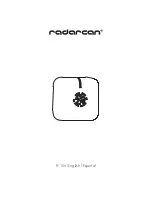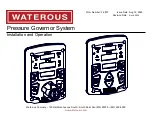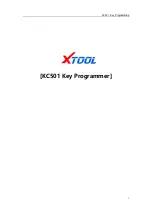
7
ENGLISH
The
PFPE
product have been manufactured and checked with a great deal of care and under very rigorous quality criteria. So the
requirements for safe use have been observed. Now it is up to you to use the product in the CORRECT way.
READ THE
INSTRUCTIONS FOR USE CAREFULLY BEFORE USING FOR THE FIRST TIME!
Please keep these instructions for use
with the product, so you will be able to refer to them in case of problems and fill in the TEST SHEET (
occupational safety document
)
carefully. In case of necessary repair or complaints it is absolutely essential to send us this test sheet together with the product.
Safety notes
Please observe the safety regulations!
A.HABERKORN products may only be used if the whole content of these instructions for use can be understood.
All users of A.HABERKORN products must have demonstrably completed recognised training on the use of
personal fall protective equipment.
Personal fall protective equipment must be used for work under risk of a fall from
a height, if it is not possible to take adequate organisational or technical protective measures. Collective protective
equipment and technical tools are preferable. All national and local safety regulations as well as the accident prevention regulations
must be observed. This
PFPE
may be used only by people who have the
physical
and
mental capabilities
as well as the
necessary
knowledge
for safe use. This
PFPE
does not release the users from their own personal risk and responsibility. A
PFPE
should be
put at the disposal of one individual user! The systems may only be used for their intended use - they must not be altered! It is
forbidden to use any equipment for leisure activities (e.g. alpine sports, sport climbing, etc.) which is not approved for use at a work
place. Note that the combination of equipment elements leads to a risk of mutual interference. When equipment elements are
combined, the user must test the safety of use before using for the first time. A combination of incompatible equipment elements may
lead to unforeseen risks.
Caution:
(complementing point 4, liability)
Everybody using this product is personally responsible for learning the correct use and technique. Every user takes and accep ts
completely full liability and all risks for any kind of damage and injuries, which result during and by the use of the product. The
manufacturer and specialist shops do not accept any liability in case of misuse and incorrect use and/or handling. These regulations
are helpful for the correct use of the product. As it is not p
ossible to list all kinds of incorrect use, it does not replace one’s own
knowledge, training, experience and own responsibility.
A rescue concept for rapid intervention in cases of emergency has to be drawn up!
Before using a PFPE, users must acquaint themselves with the possibilities for carrying out rescue measures safely and efficiently.
The users must be trained on the risks, possibilities for avoiding risks and the safe procedure of rescue and emergency measures.
All necessary rescue measures must be specified during a hazard analysis before using the PPE against falls from a height. An
emergency plan must consider the rescue measures for all possible cases of emergency during work! This means that a hazard
analysis for the particular intended use of a PPE against falls from a height and consequently a rescue plan, which describes the
fastest possible rescue action and includes all necessary equipment and procedures for rescue, must always be drawn up.
All
evaluated equipment for an eventual rescue must always be arranged and ready for immediate use. Otherwise a suspension
trauma may result!
The medical description of the consequences of a suspension trauma explains:
•
after approx. 2 - 5 min. the casualty becomes incapable of takeing action
•
after 10 - 20 min. only irreversible physical injury is possible and
•
subsequently life-threatening conditions are to be expected.
For this reason,
rescue measures must be carried out immediately!
If the person to be rescued is conscious, it is important that he/she moves his/her legs. If possible lift the body with the help of suitable
equipment (e.g.: tape slings, lanyards, suspension trauma relief loops, etc.) from the tensioned full body harness in order to relieve
the pressure of the leg loops to the inner thighs. This can reduce or avoid the pooling of blood in the legs and facilitate its backflow.
Note on anchor devices!
•
Generally,
an anchor device from which the equipment is fixed to, should, when possible, be “vertically” above the user (in order
to prevent swinging in case of a fall from a height).
•
The position of the anchor point should always be chosen in a way that the fall distance is limited to a minimum.
•
Take care that the fall zone is calculated so that the user does not fall onto an obstacle in case of a fall from a height an d that
impact on the ground is avoided.
•
Please take special care that no sharp edges endanger the anchor device (e.g. textile tape slings) as well as the safe locking of
all connectors (e.g. karabiners).
•
The load-bearing capacity of the building/ground must be ensured for the force indicated for the anchor device.
•
Temporary anchor possibilities (wooden beams, steel girders etc.) must be able to absorb the fall shock. (For the standard strength
of anchor points refer to EN795 (= at least 12kN/person)
•
If possible, use a standardised and correspondingly labelled anchor point according to EN795. Anchor devices, which are firmly
connected to a building structure, must comply with EN 795.
Regulations for the owner of the equipment
Before each use, a visual inspection and a functional test of this PFPE have to be carried out in order to guarantee that it is in working
order. A product which no longer seems safe, must NOT BE USED in case of doubt and must be discarded immediately. Always
inspect the total PFPE.
A.HABERKORN
safety products must be inspected on the following points before each use:
•
Damage to and discoloration of supporting parts, which are essential for safety
(tears, cuts, rubbing etc. …)
distortion of
metal parts
(e.g. buckles, karabiners, rings etc.)
•
Fall indicators
(intact, undamaged)
•
Cuts/tears
(fraying, loose threads, plastic parts, etc.)
•
Irreversible heavy soiling
(e.g. fat, oil, bitumen, etc.)
•
High thermal stress, contact or frictional heat
(e.g. traces of melting, sticky threads/fibres)
•
Functional test of lockings
(e.g. insertion buckles, karabiner locks, etc.)
•
Damaged rope sheath
(rope core visible)
•
Severe axial and/or radial distortion and deformation of
a kernmantle rope
(e.g. stiffening, kinks, noticeable “sponginess”)
•
Extreme rope sheath displacement
Summary of Contents for 800950
Page 26: ...26 ...








































